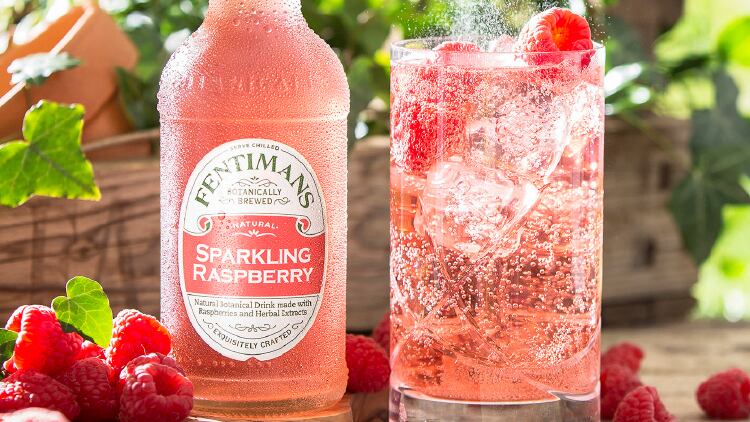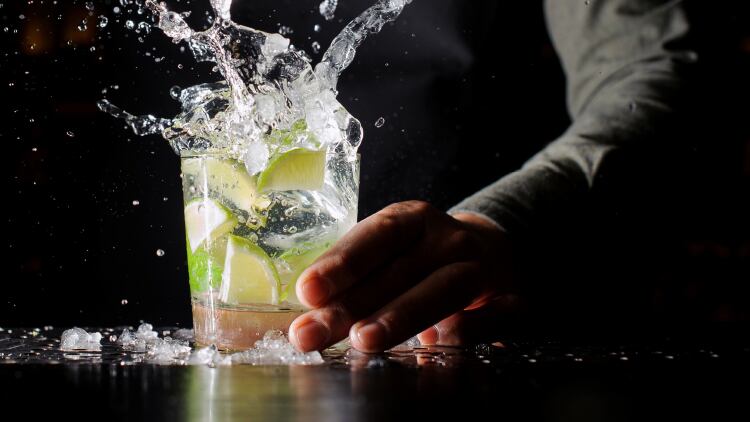Fentimans eyes growth (in association with Fentimans)
Fentimans has set its sights on accelerating growth, capitalising on the boom in the premium mixers sector. As pioneers of craft drinks, with a history spanning more than 100 years, the brand is constantly innovating with new flavours as a growing number of consumers are seeking authentic, innovative and all-natural mixers to pair with their premium spirit.
In early 2018, Fentimans invested £1.2m on a rebrand covering its entire portfolio and also a change to its glass bottle colours.
Fentimans marketing director Andrew Jackson comments: “To meet the consumer need of discovering new and interesting flavours – and on the back of the successful introduction of Pink Grapefruit and Valencian Orange Tonic Water – we have recently launched Rhubarb and Oriental Yuzu Tonic. We now have a range of 14 mixers that pair with a breadth of premium spirits.
“In addition, with the forecasted future growth of the premium mixer category, Fentimans is perfectly placed with its attention to quality and desire to innovate, to unlock the full potential in this expanding market.”

Tonics have become a battlefield as more brands enter the market in a bid to steal the top spot which, for the first time this year, was snatched from a long-reigning champion.
Never before has the UK on-trade had so many mixer brands to choose from, with new premium variants launching on a regular basis. And the same tonic brands aren’t just after gin, with many developing alternatives to the quinine soda that taps into all types of spirits.
This year, in value terms, Fever-Tree took the top-selling tonic spot from Schweppes in the off-trade, while The Morning Advertiser’s Drinks List: Top Brands to Stock 2019, showed Fever- Tree Tonic Water overtook Schweppes in the on-trade too, with volume sales up 55.6% for the 12 months to 11 August 2018, according to CGA data – although Schweppes remains the largest tonic water brand in the world.
Yet, the battle rages deeper than a fight to the top, proving to be more complex than a simple head-to-head between two brands. As more suppliers see the growth potential within mixers, inevitably there are more launches.
Growing alongside spirits
In recent months, smaller brands such as Artisan Drinks have come to the market, while bigger companies like Lucozade Ribena Suntory have brought in products including Merchant’s Heart; Britvic brought London Essence to the market; and Schweppes launched its 1783 variant.
“With growing demand for more premium products in all of the drinks categories, mixers have been the star performer and have grown alongside spirits, particularly in food-led pubs, wine bars and restaurants,” says Russell Goldman, commercial director, foodservice & licensed at Britvic.
Such growth is only possible due to consumers buying into the fact that a mixer is just as important as the spirit, says head of Merchant’s Heart Jason Sennitt. “The popularity of mixers has grown rapidly over the past decade, but it is only in the past five years or so that we have started to see craft and independent brands entering the market.
“Consumers are increasingly looking for mixers that highlight and accentuate the carefully crafted flavours found within spirits, rather than ones that mask them. The category has expanded and resulted in significant innovation and new entrants have joined the party.” Merchant’s Heart’s mixers, or spirit enhancers, range consists of six variants from tonics to a ginger ale, each of which works with a different type of spirit, although gin is still the prime spirit for many premium mixer brands.
“The gin boom is unmissable, of course, and the growing appreciation of the importance of the tonic has elevated the status of mixers more generally,” continues Sennitt.
“Flavoured tonics are certainly in heavy demand at the moment, with data showing that the number of people in the on-trade drinking their gin with classic tonic will be outnumbered by those drinking it with flavoured tonic by early 2019.”
Developing understanding
Fewer producers out there are solely focusing on gin and white spirits, with many targeting dark spirits like rum and Cognac too, perhaps in anticipation of ‘the next big thing’.
Developing the consumers’ understanding of how mixers pair with other spirits is so important to many suppliers that some have compiled illustrated guides, the most recent of which is Fentimans, which comprehensively covers spirits from gin to whisky, as well as wines and fruit brandies.
Fentimans senior customer marketing manager Claire Tyson says: “Driven by innovation and customer demand, we continue to grow our diverse range of tonics and mixers.
“When users are mixing our drinks, we need to ensure they’re having the ultimate flavour experience. Our Spirits Pairing Guide can be used as an inspiration to try new and exciting flavour combinations.”
Though the category may appear fresh to some, within the wider mixer market – including those more well known brands and products – there is a consensus that innovation, whether around spirits or not, has been strong for a long time.
“The market keeps changing, it always has and it doesn’t stop changing,” says Coca-Cola’s chief marketing officer for sparkling Javier Meza.
“Some 20 years back there were a limited number of soft drink brands and products for multiple reasons, but now the choice has grown, especially in terms of flavours and packaging and diversity,” he says.
The health agenda
Indeed, things are moving quicker than ever in terms of product development and consumer preferences, but these days health must also be on the agenda.
“For us, the future is about offering lowand no-sugar variants,” says Meza. “But we’re also working on the experience of sparkling soft drinks.”
In addition, the low- and no-alcohol movement is a big health trend, as Sennitt explains: “These drink options are becoming increasing popular as they become more relevant to consumers’ lives.
“The trend will undoubtedly continue as more people choose to abstain from alcohol or moderate their intake, usually in the pursuit of a more balanced lifestyle.”
Although the punters may be on the hunt for a low- or no-alcohol drink, they want the same quality of experience, continues Sennitt, who adds: “The on-trade is starting to really embrace the movement (possibly after a period of resistance) and risen to the challenge of creating brilliant options for the no/ low drinker.”
Symbiotic relationship
But, back to gin and there’s a school of thought that the mixer drove the category to its crazy heights, and so the same can happen for other spirits too.
“Premium and super-premium spirits are seeing a rise in popularity, with tipples such as gin, dark rum and vodka the front runners of the trend,” says Coca-Cola European Partnerstrade communications manager Amy Burgess. “This has influenced the mixer market, with people looking for premium products to pair with their favourite spirits, and is set to continue into 2019.”
And then, of course, there’s the impact of social media’s increasingly important role in driving drinks sales. It’s not only fancy cocktails that can attract thirsty punters to a venue, but also a perfectly presented long mixed drink, she concludes.
“Drinkers are now lengthening Bourbon, Cognac, mescal and much more with classic and flavoured tonics, creating great-tasting drinks and new ways to enjoy more unusual spirit categories,” adds Merchant’s Heart’s Sennitt.
Fergus Franks, Fever-Tree on-trade marketing manager, says the growing choice in the category gives consumers more freedom to shop around until they discover something they deem to be perfect.
“They are increasingly searching for both authenticity and taste, placing more importance on the provenance of what they are eating and drinking than they were five years ago,” he says.
“This awareness extends as far as the ingredients within the products, which should be the highest quality.”
So, there may be a power struggle rumbling on, but that has also afforded pubs and bars the opportunity to expand their range of mixers, giving them the ability to provide consumers with new and appealing serves.

